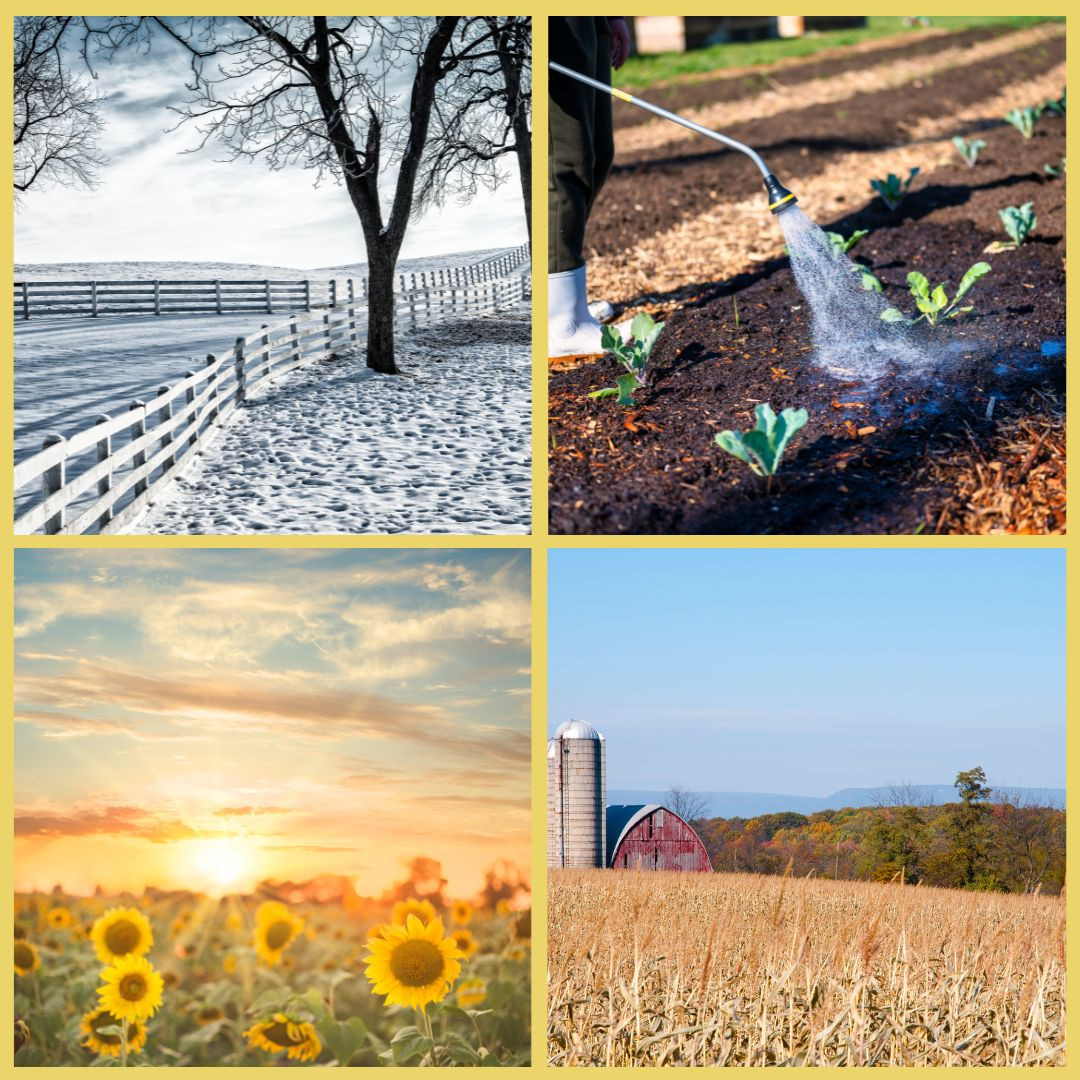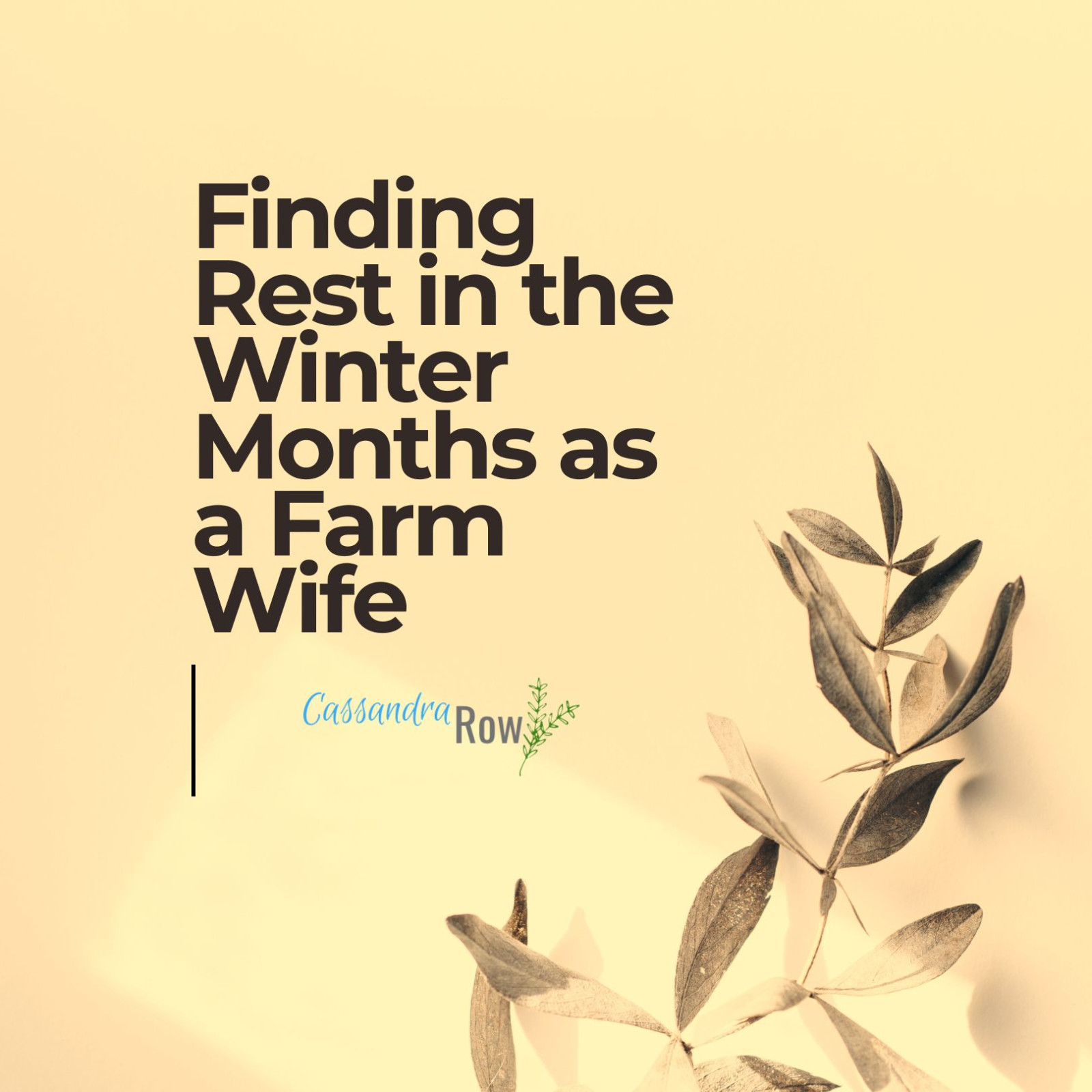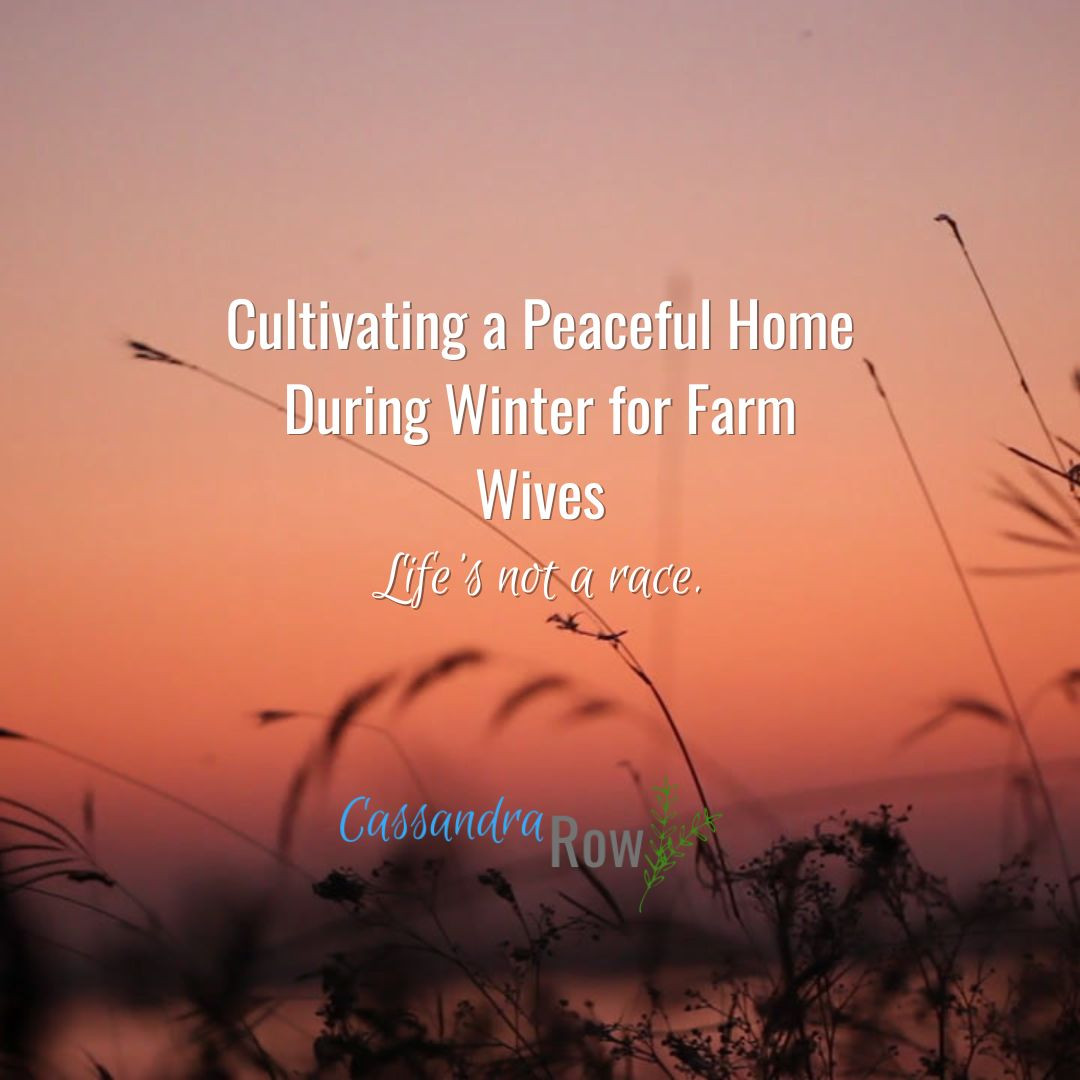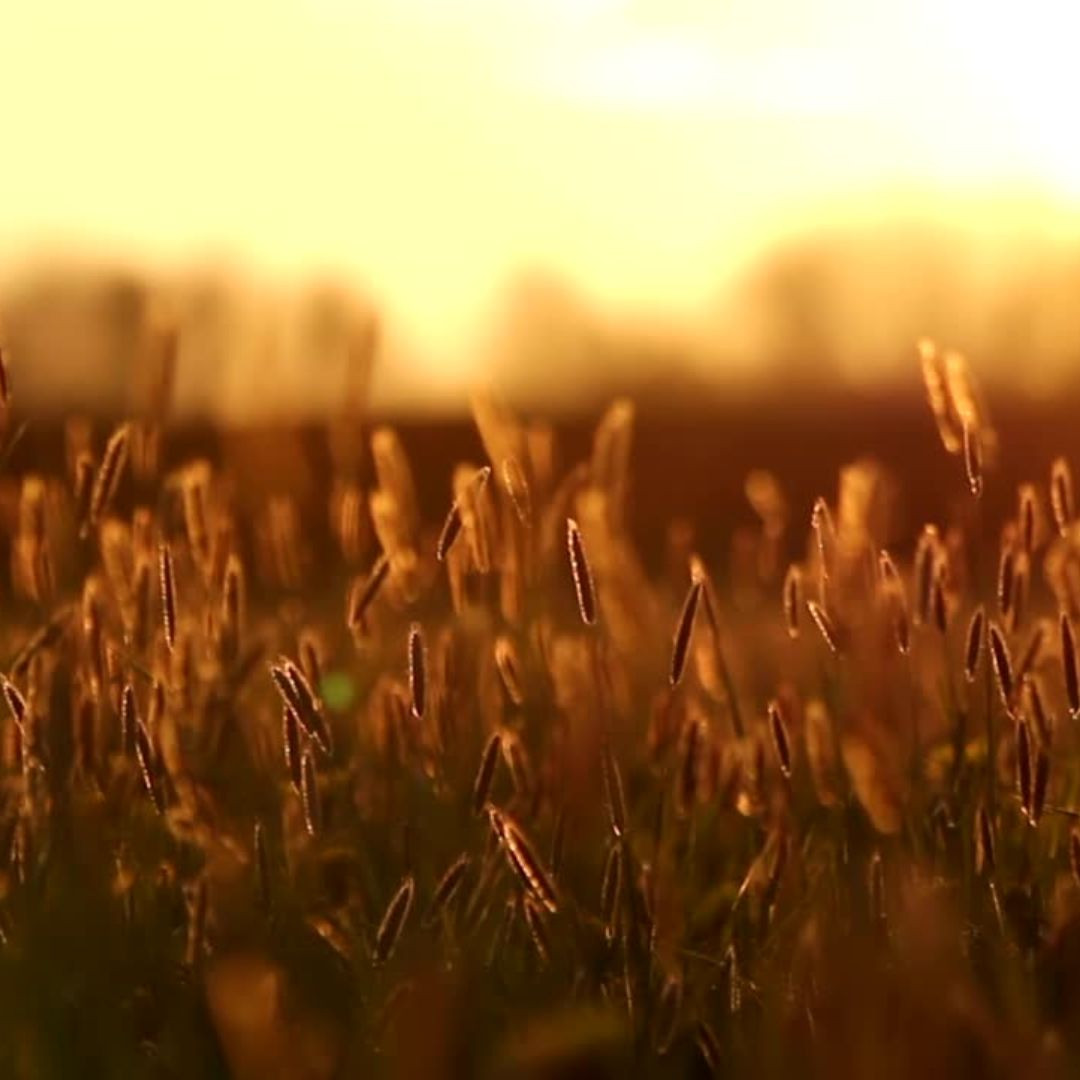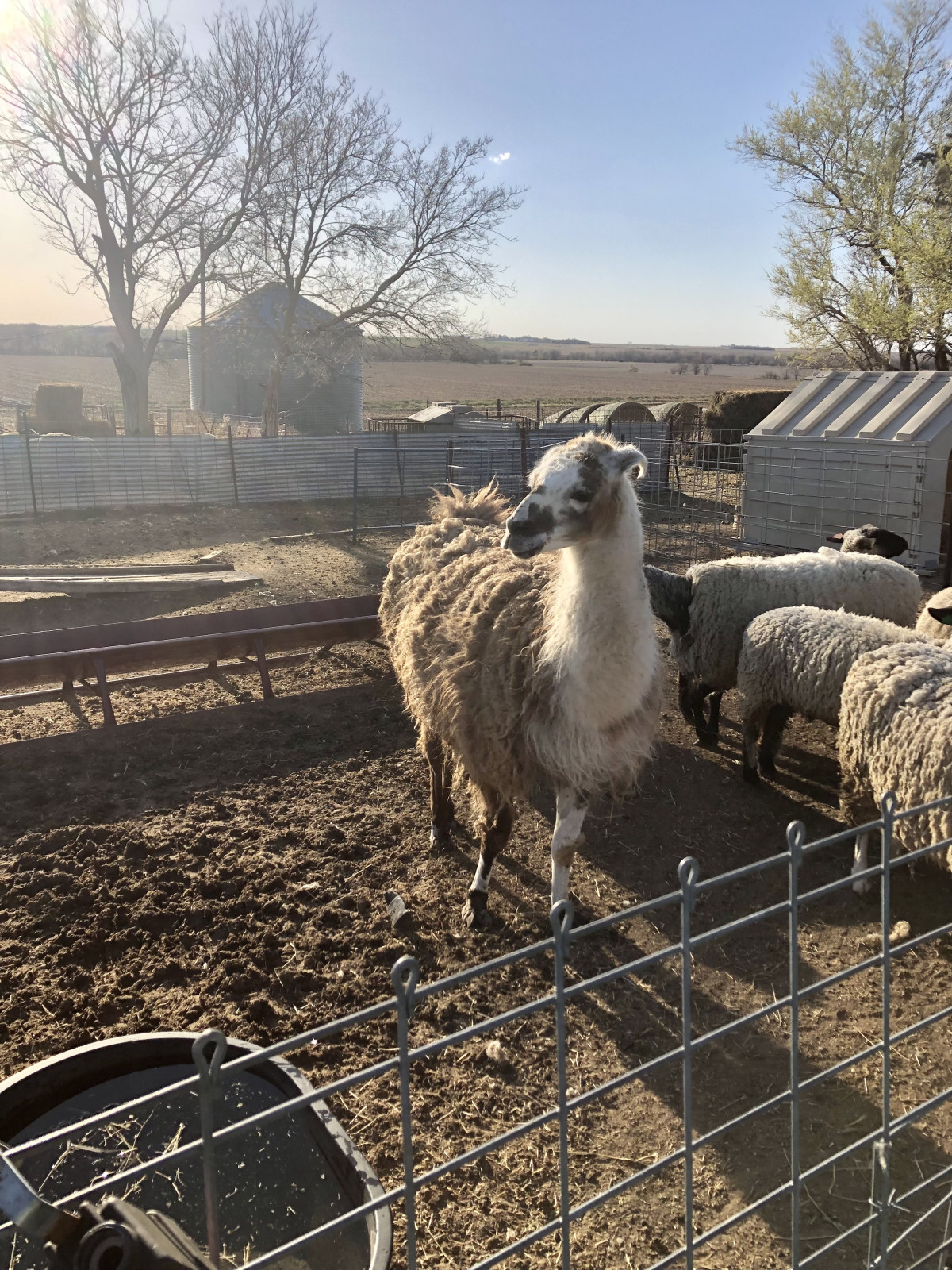
This post may contain affiliate links, which means that I may receive a commission if you make a purchase using these links, with NO additional cost to you.
The basics of a pen is to contain animals to a specific area for management or safety. This can give you a lot of freedom to design with resources you have to meet your and your animals’ needs. There are a few design differences to keep in mind for horses, cattle, and sheep/goats.
If you have access to a power source (solar, battery, plug in), electric fence can be an option for most livestock. Horses and cows will respect a single strand hot wire, calves will need a second or third. Sheep will need 4 wires, with 2 hot. Electric fence also gives you the flexibility of easily moving or rotating pastures. Keep in mind, if the fence goes dead, animals have an amazing ability to know when it’s no longer on and will let themselves out. Electric fence is a great option for open grazing space. It does not work well for close corridors/high pressure areas.
For sheep, cattle panels work well. I have tried woven wire before, and it just doesn’t hold up to ewes trying to climb the fence and heads get caught too easily in the squares. Hog panels may work for sort breeds, but most of the time they are too short, and the sheep will jump out. Keep in mind for sheep you need some kind of predator deterrent or protection. The cattle panels are tall enough to deter many predators looking for an easy meal, but a determined one will search for openings. That is where a livestock guardian animal (dog, donkey, llama, etc.) comes in.
For horses in a confined area, cattle panels will work for the short term, but they will start to reach over and bend the panels if there isn’t something sturdier. You can put an electric wire across the top to keep them from leaning on the fence. Across the front of my fence, I have 4 rails of 2x6 boards. This is a very sturdy fence, but it has the hay and feed on the other side, so a sturdy fence is needed there. The other 3 sides are 4 strand smooth wire, with 2 hot. This gives me the ability for bottle calves to run there if needed.
Cattle in high pressure areas need something even sturdier. If you are only running a few head, you could get by with a simple cattle panel pen. If you are raising and moving many cattle through a chute system, you will need strong fencing, pipe is the most common as it can handle the pressure of large herds pushing on it while moving along.
Your fencing needs will depend on how much pressure your fence is under. The more pressure, the sturdier your fence will need to be. Increase pressure comes from an increase in the number of animals or a decrease in total space or a combination. Keep in mind the goal and function of your fence (open grazing or protecting from extra feed). Then take your needs, space available, with the my tips and start designing!
As I've grown in my journey as an entrepreneur, mom, gardener, and livestock owner, I struggled to find a planner that met my needs and kept me organized. So I MADE MY OWN. You can take a look at it on the link blow and buy it on amazon below
Don't want the whole calendar part? I got you! I pulled the gardening and animal care pages out and put them in a book all their own.
Wanting a community to lean into? Join the FREE Helping Your Family Homestead for Food group! This community is for the Mommas, looking to stay home and raise their kids, but unsure how to keep everyone fed and make ends meet. I share tips from my journey from the office, to half the income and feeding my family from home, while maintaining good nourishing food. Tips include: gardening, bulk buying, caning,/preserving, livestock, homesteading, and home remedies. Your family is precious and this group is to help you gain the knowledge and tools to keep your family well and not reliant on outside professionals. Remedies and tips are easy and simple for the busy momma, time is precious after all, including pregnancy, birth, young kids, and illness. Trust your Momma gut again! This community offers the resources + community you need to help get started on your journey and prepare for whatever future you envision.
Starting to garden doesn't have to be hard! I gathered all the tips I've learned over my gardening learning curve and made them into a simple course to jump start your gardening your life.
Supporting Your Family Naturally From the Inside Out community!! This community is for the Mommas, looking to Support Your Family from Nature for Wellness. Tips range from nutrition, herbals, detoxing, natural cleaning, and essential oils. Basically all the things I’ve learned slowly over the past 5+ years if my journey. We have moved off Facebook, so to better serve our community and be able to discuss openly option for providing for your family in the best way possible.
Join the FREE Community
Join the FREE Community
I've had 3 very different pregnancies. After the first traumatic birth, I learned better and how to care for my body naturally and prevent common pregnancy and birth problems before they arise. This quick course will get you the tools you need to have a naturally healthy pregnancy, labor, and delivery. My first pregnancy I had a normal western medicine all the things pregnancy. My second? I flipped to completely natural, no medicine. Bonus: Preventing Preeclampsia Without the Aspirin & Healing from Birth Trauma
Click here to get the stories straight to your email:
For more on wellness tips click here:
For more on homesteading on your budget click here:
For more simple DIY updates click here:
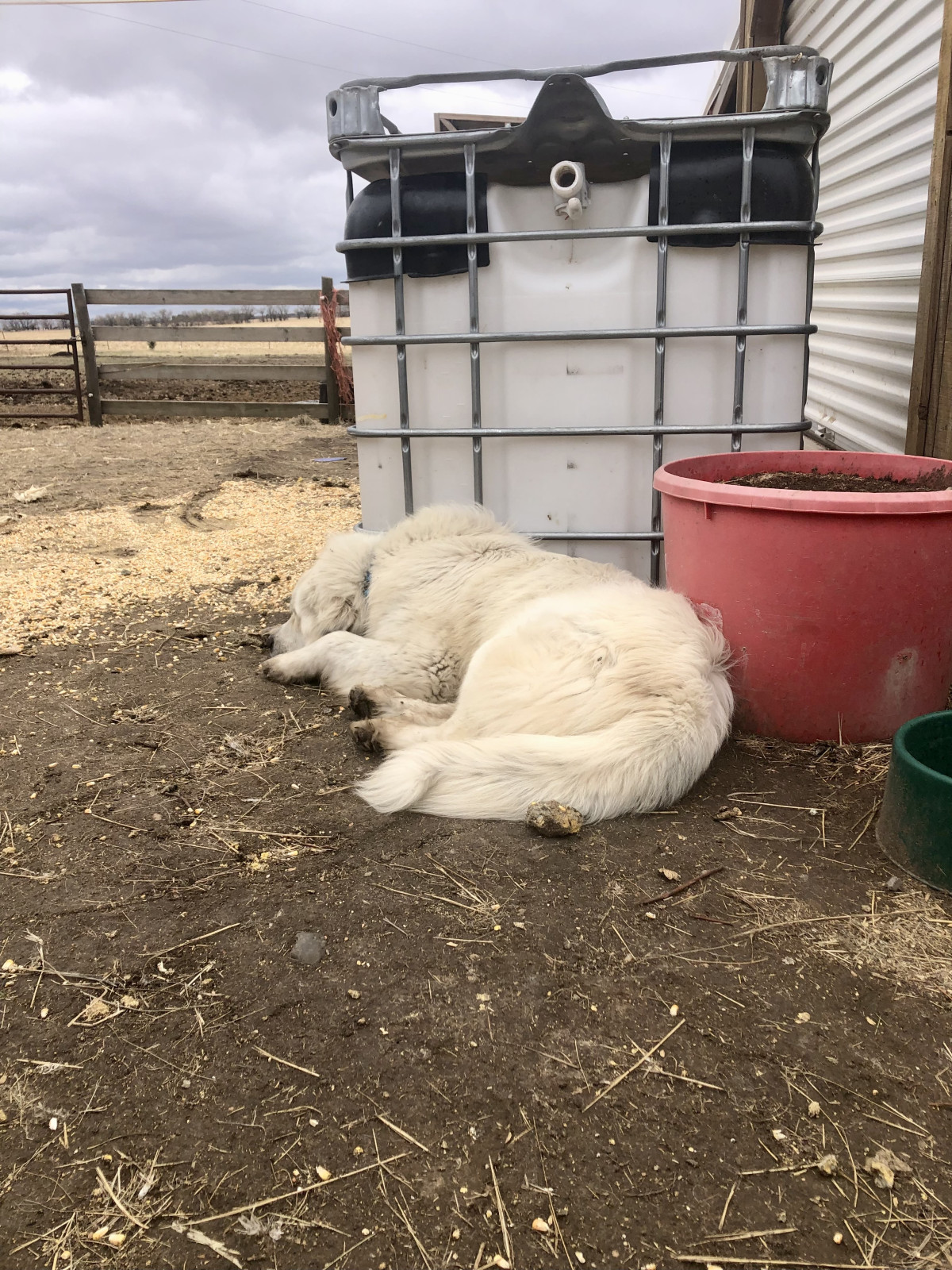
Support animals are animals that don’t directly feed you or your family but help you to care for the animals that do or help you to care for those animals. The goal of any homestead or farmstead is to have all the animals integrated into a system that works together to support each other. For example, the horses don’t feed my family directly, but they produce the fertilizer for the garden and help move the cows around, which do feed my family. So how do you feed them all? Let's take a look!
Bees
These could be debated as a support animal because they do feed my family with the honey they produce. However, they mostly feed themselves and help with pollination in my garden and orchard. The biggest thing with bees is making sure they have water, ideally close, bees will fly 2 miles for resources. However, I want them drinking from my water, not the pivots around us. I usually just leave a board in the closest pool/water tank, and they quickly learn to get water from there. Really this water is then watering multiple livestock.
As far as feeding the bees, going into winter you want to make sure they have 2 deep boxes full of honey, in Nebraska. I then put an emergency feed of sugar, sprayed with water to crust it over, on top of the last box. This is because I may not be able to get into the hive and check the bees for 2 months because it is so cold.
Horses
Horses need forage, ideally 20 hours a day. Grass pasture is ideal, but not always accessible. Most horses will do fine with good grass hay, just be aware of mold in the bales. Older horses will need more special feed (you can read more on that in my blog Caring for Your Senior Horse). If more protein is needed, alfalfa can also be fed. Also have a salt block available (iodized if you are in an iodine deficient zone).
Many people feed their horse grain. There are so many options there and will depend on the age and workload of your horse. My horses’ work is light and are easy keepers. They get prairie hay and some oats to deliver their vitamin/mineral supplement. Whole oats are usually an easy and safe option for most horses.
Dogs
Dogs need some kind of food, unless you want them feeding themselves with the chickens. A good farm dog may run free on the property and not need a lot of actual dog food, if they are catching rabbits. However, it is good to have it available for them. Growing up my dogs were free fed from a communal bow. The bowl of food was filled once a day and they at as they felt and shared. Now? I have 4 very different dogs, with very different needs (blue heeler to great Pyrenees). I cannot leave a bowl of food out all day, as the blue heeler would eat herself to death. I do still feed them all together, but in their separate bowls.
The easiest way to feed them is to get them some dog food from your local farm/feed store. You will need to pay attention to the protein amount, as many feeds do not have enough protein for working active dogs. You can feed dogs the scraps of food from the kitchen, and if you have a milk cow or make your own cheese, they love the whey. Our dogs also get other animal organs once a week to stretch the dog food.
I do strongly recommend communal feeding, especially if you have more than one working dog. Dogs that eat together as a pack, work together as a pack. You can retrain them even if they haven’t been eating together. Start with their own bowls and slowly move the bowls closer together. If anyone growls, they lose their food and are sent away from the food circle. There will be days a dog will go hungry, but they very quickly learn to eat together. My dogs now eat all with bowls touching, and the fighting has greatly decreased.
Cats
News flash, barn cats can survive on dog food. I know, send me the hate mail now, but here me out. The main difference between cat and dog food is most dog foods don’t have taurine, and definitely not enough to meet a cat’s needs. Dog food also tends to be lower in arachidonic acid, niacin, and vitamin A than cats need. Here’s the thing, if your barn cats are doing their job, hunting mice and small rodents), they are going to get those nutrients.
The key with barn cats is to feed them some, enough to keep them around, but not enough that they don’t want to go hunting for the mice around the barns. Also only feed them in the morning or early afternoon, so the food is cleaned up before evening when the opossums come out.
Feeding your support partners doesn't have to be complicated. There are a few things to keep in mind though to make sure everyone stays healthy.
As I've grown in my journey as an entrepreneur, mom, gardener, and livestock owner, I struggled to find a planner that met my needs and kept me organized. So, I MADE MY OWN. You can take a look at it on the link blow and buy it on amazon below:
Don't want the whole calendar part? I got you! I pulled the gardening and animal care pages out and put them in a book all their own.
Wanting a community to lean into? Join the FREE Helping Your Family Homestead for Food group! This community is for the Mommas, looking to stay home and raise their kids, but unsure how to keep everyone fed and make ends meet. I share tips from my journey from the office, to half the income and feeding my family from home, while maintaining good nourishing food. Tips include: gardening, bulk buying, caning,/preserving, livestock, homesteading, and home remedies. Your family is precious and this group is to help you gain the knowledge and tools to keep your family well and not reliant on outside professionals. Remedies and tips are easy and simple for the busy momma, time is precious after all, including pregnancy, birth, young kids, and illness. Trust your Momma gut again! This community offers the resources + community you need to help get started on your journey and prepare for whatever future you envision.
Starting to garden doesn't have to be hard! I gathered all the tips I've learned over my gardening learning curve and made them into a simple course to jump start your gardening your life.
Supporting Your Family Naturally From the Inside Out community!! This community is for the Mommas, looking to Support Your Family from Nature for Wellness. Tips range from nutrition, herbals, detoxing, natural cleaning, and essential oils. Basically all the things I’ve learned slowly over the past 5+ years if my journey. We have moved off Facebook, so to better serve our community and be able to discuss openly option for providing for your family in the best way possible.
Join the FREE Community
Join the FREE Community
I've had 3 very different pregnancies. After the first traumatic birth, I learned better and how to care for my body naturally and prevent common pregnancy and birth problems before they arise. This quick course will get you the tools you need to have a naturally healthy pregnancy, labor, and delivery. My first pregnancy I had a normal western medicine all the things pregnancy. My second? I flipped to completely natural, no medicine. Bonus: Preventing Preeclampsia Without the Aspirin & Healing from Birth Trauma
Click here to get the stories straight to your email:
For more on wellness tips click here:
For more on homesteading on your budget click here:
For more simple DIY updates click here:
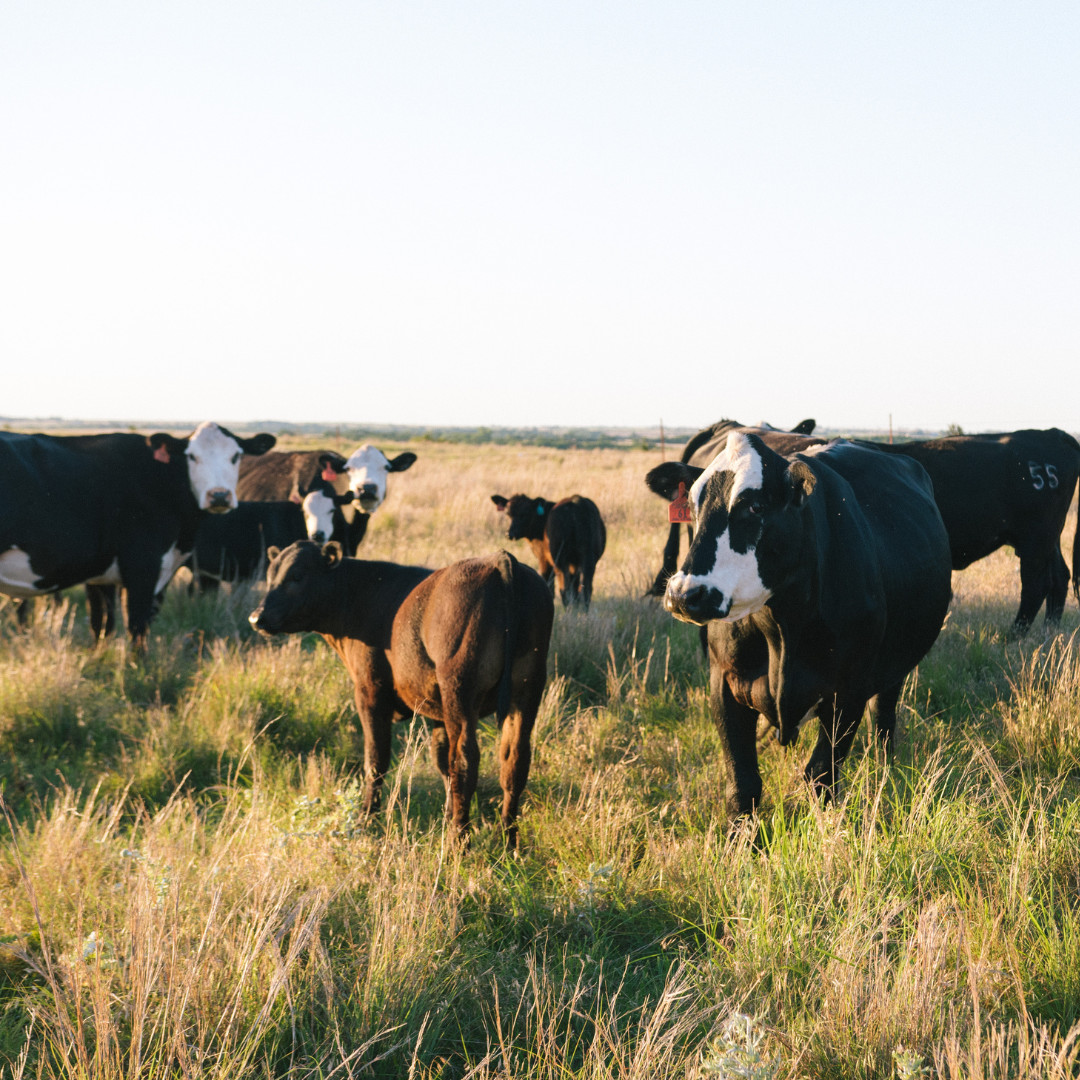
This post may contain affiliate links, which means that I may receive a commission if you make a purchase using these links, with NO additional cost to you.
I’m going to be specific on this blog to beef cows and feeding for fattening. There is a difference in feeding beef/fattening cattle and dairy cows. This is another topic I’m going to try to not get into to much science details. I’ve had a lot of school and life experience feeding cattle.
If you are a beginner homesteader raising beef cows, it's essential to know how to feed them correctly. Unlike dairy cows, feeding beef cows is less complicated, but it still requires a bit of science, especially when you don't have access to year-round pasture grass. Feeding cows lacks year-round grazing is possible, provided you adhere to some essential nutritional requirements. The secret lies in providing the necessary macro and micro-nutrients to your cows, including proper protein supplements, minerals, and vitamins. Many micro-nutrients can be made by bacteria in the rumen of the cow. In this post, we will focus on the basics of feeding in the lack of year-round pasture access, aimed specifically at beginner homesteaders.
1. Start with Forage
Forage is the foundation of a cow's diet, even when you don't have access to pasture. Dry hay, silage, and other types of roughage are great sources of forage to replace pasture grass. It is imperative to ensure that the forage you choose contains the essential minerals and protein requirements. Generally, good quality forage will contain more than 50% proportion of total intake. Ensure that you provide adequate amounts of forage for your cows, depending on their weight and body condition score.
2. Add Supplements to meet Deficiencies
Cows require specific supplements, such as protein and minerals, to meet their nutritional needs. During the winter season, beef cows may need more energy and protein, especially for pregnant or lactating cows. You can supplement your cows' diet with alfalfa, soybean meal or cottonseed meal, but you need to ensure that you do not exceed the recommended dosage. Make sure that the supplements you choose provide the correct amounts of nutrients to meet your cows' protein and energy requirements. Cattle being fed for beef/fattening will require more energy and protein, than a cow in reproduction stage of her life.
3. Offer Salt and Mineral Lick Blocks
Minerals and vitamins are micronutrients that are essential for the growth and development of beef cows. They are needed in small amounts but are crucial for proper bodily functions. There are two types of minerals – macrominerals and microminerals. Macrominerals such as Potassium, Calcium, and Magnesium are needed in larger quantities, while microminerals such as Zinc, Copper, and Manganese are only needed in small quantities. These nutrients can be provided in the form of salt mineral supplements, which should be available to cows at all times.
4. Provide Water
Water is essential for cows as their bodies require it for various functions, such as digestion, metabolism and temperature control. During the winter season, cows may drink less water, but you need to ensure that they have access to clean water regularly. Generally, cows consume around 1-3 gallons of water for every 100 pounds of their weight.
5. Optimize Feeding Practices
To efficiently feed your beef cows without year-round pasture access, it's essential to optimize your feeding practices. You can feed your cows using a total mixed ration (TMR), in which all the ingredients are combined to meet their nutritional requirements. Additionally, you can feed your cows using a ration balancer that contains a combination of essential vitamins and minerals to supplement their diet.
Feeding beef cows isn’t rocket science, but it’s not quite as simple as feeding them some hay and grains. The key to ensuring the health and productivity of beef cows is providing a balanced diet that meets their nutritional needs, including proteins, minerals, and vitamins. Additionally, feeding them should be adjusted depending on the season and the needs of the cow's life stage. While grazing year-round is the easiest option, when that is not possible, supplements like soybean meal and mineral supplements can help meet their dietary needs. Understanding these basics can make a significant difference in your beef cow farming, and even beginner homesteaders can provide their cows with proper nutrition by using the tips outlined in this post. If you are wanting more information on specifics, join my free group for beginner homesteaders linked below. I go into way more detail there.
As I've grown in my journey as an entrepreneur, mom, gardener, and livestock owner, I struggled to find a planner that met my needs and kept me organized. So, I MADE MY OWN. You can take a look at it on the link blow and buy it on amazon below:
Don't want the whole calendar part? I got you! I pulled the gardening and animal care pages out and put them in a book all their own.
Wanting a community to lean into? Join the FREE Helping Your Family Homestead for Food group! This community is for the Mommas, looking to stay home and raise their kids, but unsure how to keep everyone fed and make ends meet. I share tips from my journey from the office, to half the income and feeding my family from home, while maintaining good nourishing food. Tips include: gardening, bulk buying, caning,/preserving, livestock, homesteading, and home remedies. Your family is precious and this group is to help you gain the knowledge and tools to keep your family well and not reliant on outside professionals. Remedies and tips are easy and simple for the busy momma, time is precious after all, including pregnancy, birth, young kids, and illness. Trust your Momma gut again! This community offers the resources + community you need to help get started on your journey and prepare for whatever future you envision.
Starting to garden doesn't have to be hard! I gathered all the tips I've learned over my gardening learning curve and made them into a simple course to jump start your gardening your life.
Supporting Your Family Naturally From the Inside Out community!! This community is for the Mommas, looking to Support Your Family from Nature for Wellness. Tips range from nutrition, herbals, detoxing, natural cleaning, and essential oils. Basically all the things I’ve learned slowly over the past 5+ years if my journey. We have moved off Facebook, so to better serve our community and be able to discuss openly option for providing for your family in the best way possible.
Join the FREE Community
Join the FREE Community
I've had 3 very different pregnancies. After the first traumatic birth, I learned better and how to care for my body naturally and prevent common pregnancy and birth problems before they arise. This quick course will get you the tools you need to have a naturally healthy pregnancy, labor, and delivery. My first pregnancy I had a normal western medicine all the things pregnancy. My second? I flipped to completely natural, no medicine. Bonus: Preventing Preeclampsia Without the Aspirin & Healing from Birth Trauma
Click here to get the stories straight to your email:
For more on wellness tips click here:
For more on homesteading on your budget click here:
For more simple DIY updates click here:
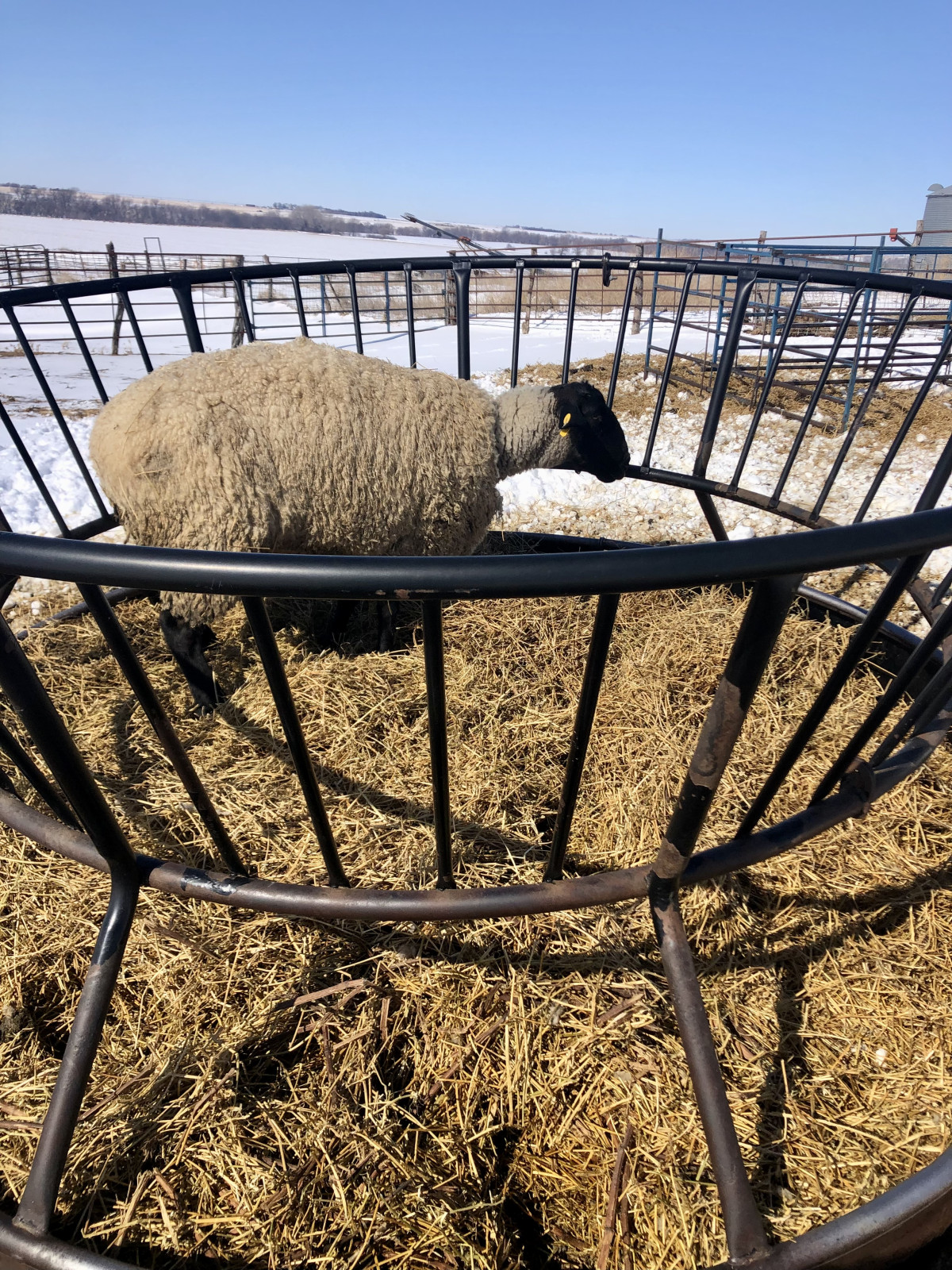
This post may contain affiliate links, which means that I may receive a commission if you make a purchase using these links, with NO additional cost to you.
Feeding sheep isn’t really complicated. There are a few key things to keep in mind though. Buckle up were going to fly through 20 years of sheep feeding experience in 492 words. If you want more details, join my free group linked below. Let’s go!
First if you’re grazing sheep, keep in mind they prefer broad leaf weeds over grass. Perfect for chemical free pasture weeding. You will however need to have some kind of predator proofing. Sheep are favorite meals for several large predators, like coyotes. We’ll talk more on fencing in a later blog. Another good option is to run some kind of livestock guarding, either a dog, donkey, llama, or combination are the most popular for sheep. Dividing the pasture into small areas or paddocks and then moving them every 2-3 days, best utilize the pasture.
Forage is key for sheep as they are ruminants. Keep in mind when feeding any ruminant, or really any animal (human included), you are actually feeding the bacteria in the gut first. The bacteria then produce much of the nutrients, in the form of volatile fatty acids, in the rumen. The partly digested food, then passes through the rest of the digestive tract, where it is broken down into absorbable compounds.
If you do not have safe pasture for sheep, not all is lost. You can keep sheep in a dry lot. You will need to have forage, usually grass or alfalfa hay. They will need supplements for vitamins and minerals, as those may be lacking in dried hay. One thing with minerals for sheep is you must feed sheep only mineral. Sheep are very easily to give too much copper and become toxic.
Just prior to breeding season it is helpful to give the ewes some grain, such as corn. The nutrient boost helps to prepare them for breeding and ovulate more eggs, giving a greater percentage of twins. You could do this with pasture as well, by giving them access to new growth pasture, which tends to be higher in nutrients.
Sheep are also expert sorters. If you are unsure of what they are eating, watch them for a little bit and you will quickly see what they sort out. Be careful to give adequate nutrition during pregnancy, but not excessive. To many nutrients you will have very big lambs and need to pull or assist in birth. To few nutrients, you will have weak lambs. Sorting ewes by how many lambs they are carrying can be helpful, but not necessary.
After lambing, ewes will need supplementing if you are lambing in the winter months. Ewes have high nutrient requirements as they are lactating. As weaning approaches, you can decrease the grain to help the ewes naturally dry up. In a dry lot setting, make sure you have a creep area for the lambs to have access to grain formulated for their growing bodies. They will eat hay with their mom (alfalfa is best during lactation).
Remember, sheep need forage first. Pasture is ideal, but you can match hay with seasons and ewe cycle, supplementing with grain as needed. Always have access to clean water, that the smallest lamb in the pen can reach, as well.
As I've grown in my journey as an entrepreneur, mom, gardener, and livestock owner, I struggled to find a planner that met my needs and kept me organized. So, I MADE MY OWN. You can take a look at it on the link blow and buy it on amazon below:
Don't want the whole calendar part? I got you! I pulled the gardening and animal care pages out and put them in a book all their own.
Wanting a community to lean into? Join the FREE Helping Your Family Homestead for Food group! This community is for the Mommas, looking to stay home and raise their kids, but unsure how to keep everyone fed and make ends meet. I share tips from my journey from the office, to half the income and feeding my family from home, while maintaining good nourishing food. Tips include: gardening, bulk buying, caning,/preserving, livestock, homesteading, and home remedies. Your family is precious and this group is to help you gain the knowledge and tools to keep your family well and not reliant on outside professionals. Remedies and tips are easy and simple for the busy momma, time is precious after all, including pregnancy, birth, young kids, and illness. Trust your Momma gut again! This community offers the resources + community you need to help get started on your journey and prepare for whatever future you envision.
Starting to garden doesn't have to be hard! I gathered all the tips I've learned over my gardening learning curve and made them into a simple course to jump start your gardening your life.
Supporting Your Family Naturally From the Inside Out community!! This community is for the Mommas, looking to Support Your Family from Nature for Wellness. Tips range from nutrition, herbals, detoxing, natural cleaning, and essential oils. Basically all the things I’ve learned slowly over the past 5+ years if my journey. We have moved off Facebook, so to better serve our community and be able to discuss openly option for providing for your family in the best way possible.
Join the FREE Community
Join the FREE Community
I've had 3 very different pregnancies. After the first traumatic birth, I learned better and how to care for my body naturally and prevent common pregnancy and birth problems before they arise. This quick course will get you the tools you need to have a naturally healthy pregnancy, labor, and delivery. My first pregnancy I had a normal western medicine all the things pregnancy. My second? I flipped to completely natural, no medicine. Bonus: Preventing Preeclampsia Without the Aspirin & Healing from Birth Trauma
Click here to get the stories straight to your email:
For more on wellness tips click here:
For more on homesteading on your budget click here:
For more simple DIY updates click here:
This post may contain affiliate links, which means that I may receive a commission if you make a purchase using these links, with NO additional cost to you.
If you're thinking of starting a small homestead, keeping chickens is a great way to start. Chickens are fairly low-maintenance and forgiving when it comes to feeding. As long as you provide them with some supplemental feed and kitchen scraps along with their free-range activities, they'll thrive. There are a few things to keep in mind, though. Whether you're looking to buy formulated feed from a farm store or make your own feed mix, this beginner's guide will give you all the tips you need to keep your chickens fed and healthy. If you can’t free range, no worries! You can still have chickens.
Formulated Feed:
The easiest way to keep your chickens fed is to buy formulated feed from a farm store. It contains all the necessary nutrients that your chickens need to thrive. You can choose between different formulations based on the age of your chickens, their breed, or if they're laying hens or meat birds. You can also choose between pellets, crumbles, or mash, depending on your chickens' preference. This is by far the easiest for free-ranging and those not. It is also more expensive. Keeping a self-feeder of oyster shells or crushed egg shells for laying hens, is a must to keep hens laying appropriately.
Kitchen Scraps:
Chickens love kitchen scraps, but there are a few things to keep in mind. Firstly, make sure that scraps are fresh and not moldy or spoiled. Secondly, avoid giving them scraps that are too salty, spicy, or greasy. Lastly, avoid giving them scraps that contain avocados, chocolate, onions, or citrus, as they can be toxic for chickens. Kitchen scraps that are great for chickens include fruits, vegetables, grains, and bread. I like to scatter these on the ground around the coop or in the run for extra entertainment for them.
Supplemental Feed:
If you can free-range your chickens in your backyard, you don't need to feed them a lot of formulated feed. However, it's always a good idea to have some supplemental feed on hand. You can buy scratch grains, which are a mixture of grains like corn, wheat, and barley, and scatter them in your backyard for your chickens to find. You can should add some oyster shell or grit to their feed to help with digestion. Free ranging is also excellent for bug control. They will meet most of their protein requirements from bugs. In the winter you will need to supplement more to meet their nutritional requirements.
Home Feed Mix:
If you're looking to save money and make your own feed mix, it's important to keep in mind the essential nutrients that your chickens need, such as protein, carbohydrates, vitamins, and minerals. You can make a mix of whole grains, like wheat, corn, oats, and barley, and add some soybean meal, distillers, or fish meal for protein. There are several different ways to raise your own protein by growing bugs for your chickens. You can also add some greens, like alfalfa, for vitamins and minerals. However, before making your own feed mix, it's important to research and consult with an expert to ensure that your chickens are getting all the essential nutrients they need. (I’ll be dropping what I’ve learned in my free Beginner Homesteading group linked below).
Water:
Finally, it's important to make sure that your chickens always have access to fresh water. Water helps with digestion and keeps your chickens hydrated. You can use a water dispenser or a chicken waterer to make sure that your chickens have access to water at all times. Make sure to change the water regularly to avoid contamination and bacteria growth. You will also need to clean and scrub out the waters about once a week in the summer to keep algae growth away.
Keeping chickens fed is fairly easy, as long as you provide them with the necessary nutrients they need to thrive. When you don’t they won’t give you eggs. Whether you choose to buy formulated feed, feed them kitchen scraps, or make your own feed mix, always keep in mind the essential nutrients that your chickens need. Also, make sure to provide them with fresh water at all times. By following these tips, your chickens will be happy and healthy, and your homestead will be off to a great start.
As I've grown in my journey as an entrepreneur, mom, gardener, and livestock owner, I struggled to find a planner that met my needs and kept me organized. So I MADE MY OWN. You can take a look at it on the link blow and buy it on amazon below
Don't want the whole calendar part? I got you! I pulled the gardening and animal care pages out and put them in a book all their own.
Wanting a community to lean into? Join the FREE Helping Your Family Homestead for Food group! This community is for the Mommas, looking to stay home and raise their kids, but unsure how to keep everyone fed and make ends meet. I share tips from my journey from the office, to half the income and feeding my family from home, while maintaining good nourishing food. Tips include: gardening, bulk buying, caning,/preserving, livestock, homesteading, and home remedies. Your family is precious and this group is to help you gain the knowledge and tools to keep your family well and not reliant on outside professionals. Remedies and tips are easy and simple for the busy momma, time is precious after all, including pregnancy, birth, young kids, and illness. Trust your Momma gut again! This community offers the resources + community you need to help get started on your journey and prepare for whatever future you envision.
Starting to garden doesn't have to be hard! I gathered all the tips I've learned over my gardening learning curve and made them into a simple course to jump start your gardening your life.
Supporting Your Family Naturally From the Inside Out community!! This community is for the Mommas, looking to Support Your Family from Nature for Wellness. Tips range from nutrition, herbals, detoxing, natural cleaning, and essential oils. Basically all the things I’ve learned slowly over the past 5+ years if my journey. We have moved off Facebook, so to better serve our community and be able to discuss openly option for providing for your family in the best way possible.
Join the FREE Community
Join the FREE Community
I've had 3 very different pregnancies. After the first traumatic birth, I learned better and how to care for my body naturally and prevent common pregnancy and birth problems before they arise. This quick course will get you the tools you need to have a naturally healthy pregnancy, labor, and delivery. My first pregnancy I had a normal western medicine all the things pregnancy. My second? I flipped to completely natural, no medicine. Bonus: Preventing Preeclampsia Without the Aspirin & Healing from Birth Trauma
Click here to get the stories straight to your email:
For more on wellness tips click here:
For more on homesteading on your budget click here:
For more simple DIY updates click here:
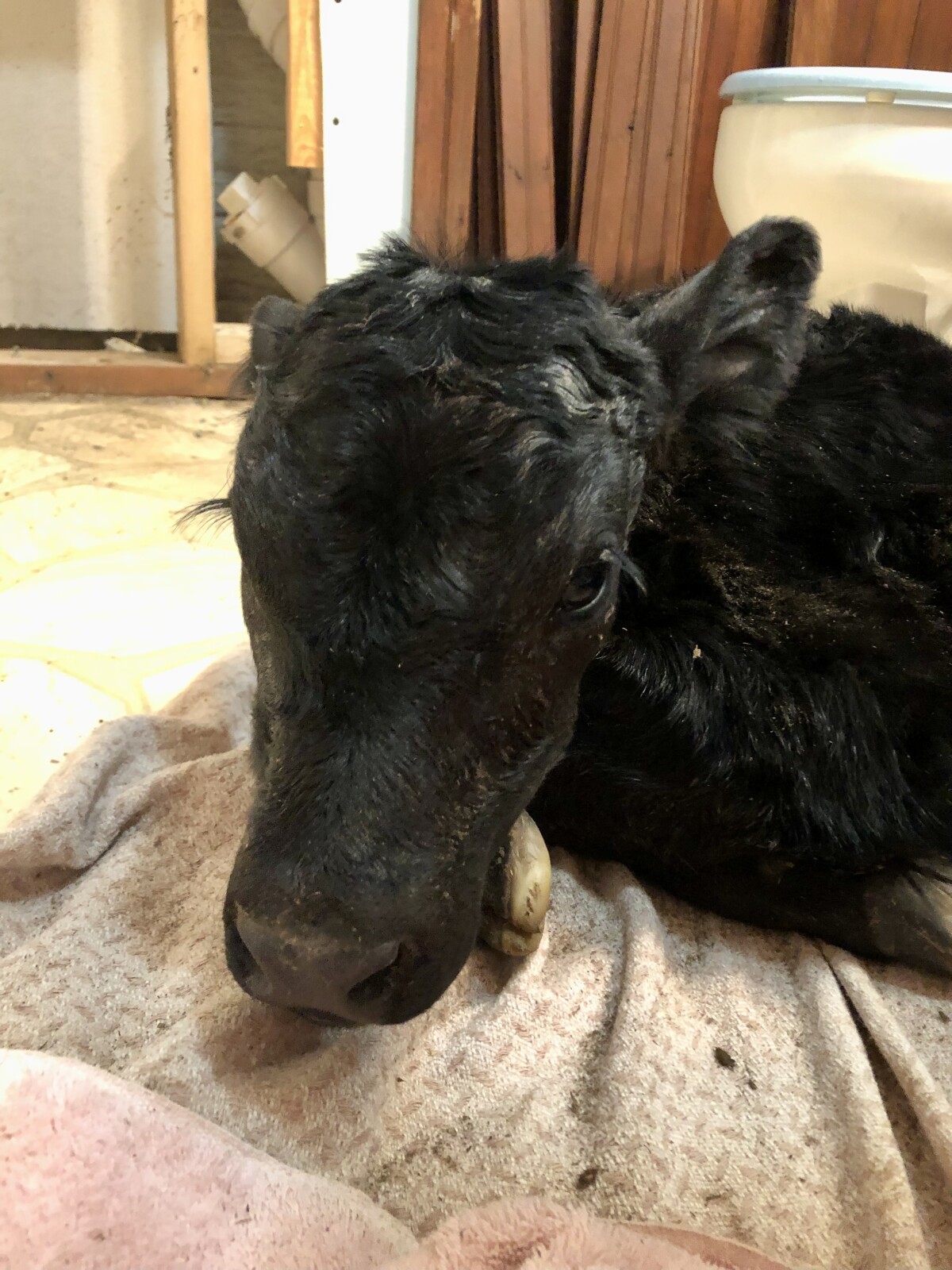
This post may contain affiliate links, which means that I may receive a commission if you make a purchase using these links, with NO additional cost to you.
If you’re a homesteader, chances are you may have thought of raising your own bottle calves. Bottle calves are just like any other animal—they need food, shelter, and care. In this article, we’ll go over all the basics you need to know when caring for a bottle calf. From getting them settled in their new home to what they should eat as they grow up, we’ve got you covered!
Shelter and Supplies
When it comes to shelter, all the calf needs is a small space that is both dry and draft-free. Depending on how large your calf will be at full size, you can either purchase or build a small structure that meets these criteria. The structure should provide enough room for the calf to stand up and turn around in. In addition to shelter, you will also need a calf bottle, with nipple, and milk replacer (by weight). You can find milk replacer at most feed stores. Calf milk replacer is specially formulated to give them all of the nutrition they need to grow healthy and strong.
If you've brought in a cold calf from outside, it's important to warm them up as quickly as possible. It's best if you have an old quilt or blanket handy that can be used as an insulator. A hair dryer is also helpful for warming them up quickly—just make sure not to get too close with the hair dryer! Once warmed up and fed, the calf should settle right into its new home in no time. If you are having problems getting a calf to nurse, check out the post on Getting the Stubborn Ones to Nurse.
As They Grow
Once your bottle calves get older, they'll need more than just milk replacer—they also need hay or alfalfa (grass hay works best) and creep feed. Creep feed is typically a pellet and is specially formulated for younger animals like calves who aren't quite ready for regular feed yet. You'll want to introduce creep feed gradually so your calf has time to adjust before it starts consuming it fully. In addition, always make sure there’s plenty of fresh water available for your calves!
Caring for bottle calves is an incredibly rewarding experience when done correctly; however, there are several supplies needed to ensure their health and wellbeing. Shelters are essential for keeping them safe from predators and harsh weather conditions while bottles, milk replacer, hay and grains provide them with all the nutrients they need for strong physical development. Finally, old blankets and hair dryers can be used to warm any cold or weak calves that may come in so that they can thrive on your homestead!
As I've grown in my journey as an entrepreneur, mom, gardener, and livestock owner, I struggled to find a planner that met my needs and kept me organized. So I MADE MY OWN. You can take a look at it on the link blow and buy it on amazon below
Don't want the whole calendar part? I got you! I pulled the gardening and animal care pages out and put them in a book all their own.
Wanting a community to lean into? Join the FREE Helping Your Family Homestead for Food group! This community is for the Mommas, looking to stay home and raise their kids, but unsure how to keep everyone fed and make ends meet. I share tips from my journey from the office, to half the income and feeding my family from home, while maintaining good nourishing food. Tips include: gardening, bulk buying, caning,/preserving, livestock, homesteading, and home remedies. Your family is precious and this group is to help you gain the knowledge and tools to keep your family well and not reliant on outside professionals. Remedies and tips are easy and simple for the busy momma, time is precious after all, including pregnancy, birth, young kids, and illness. Trust your Momma gut again! This community offers the resources + community you need to help get started on your journey and prepare for whatever future you envision.
Starting to garden doesn't have to be hard! I gathered all the tips I've learned over my gardening learning curve and made them into a simple course to jump start your gardening your life.
Supporting Your Family Naturally From the Inside Out community!! This community is for the Mommas, looking to Support Your Family from Nature for Wellness. Tips range from nutrition, herbals, detoxing, natural cleaning, and essential oils. Basically all the things I’ve learned slowly over the past 5+ years if my journey. We have moved off Facebook, so to better serve our community and be able to discuss openly option for providing for your family in the best way possible.
Join the FREE Community
Join the FREE Community
I've had 3 very different pregnancies. After the first traumatic birth, I learned better and how to care for my body naturally and prevent common pregnancy and birth problems before they arise. This quick course will get you the tools you need to have a naturally healthy pregnancy, labor, and delivery. My first pregnancy I had a normal western medicine all the things pregnancy. My second? I flipped to completely natural, no medicine. Bonus: Preventing Preeclampsia Without the Aspirin & Healing from Birth Trauma
Click here to get the stories straight to your email:
For more on wellness tips click here:
For more on homesteading on your budget click here:
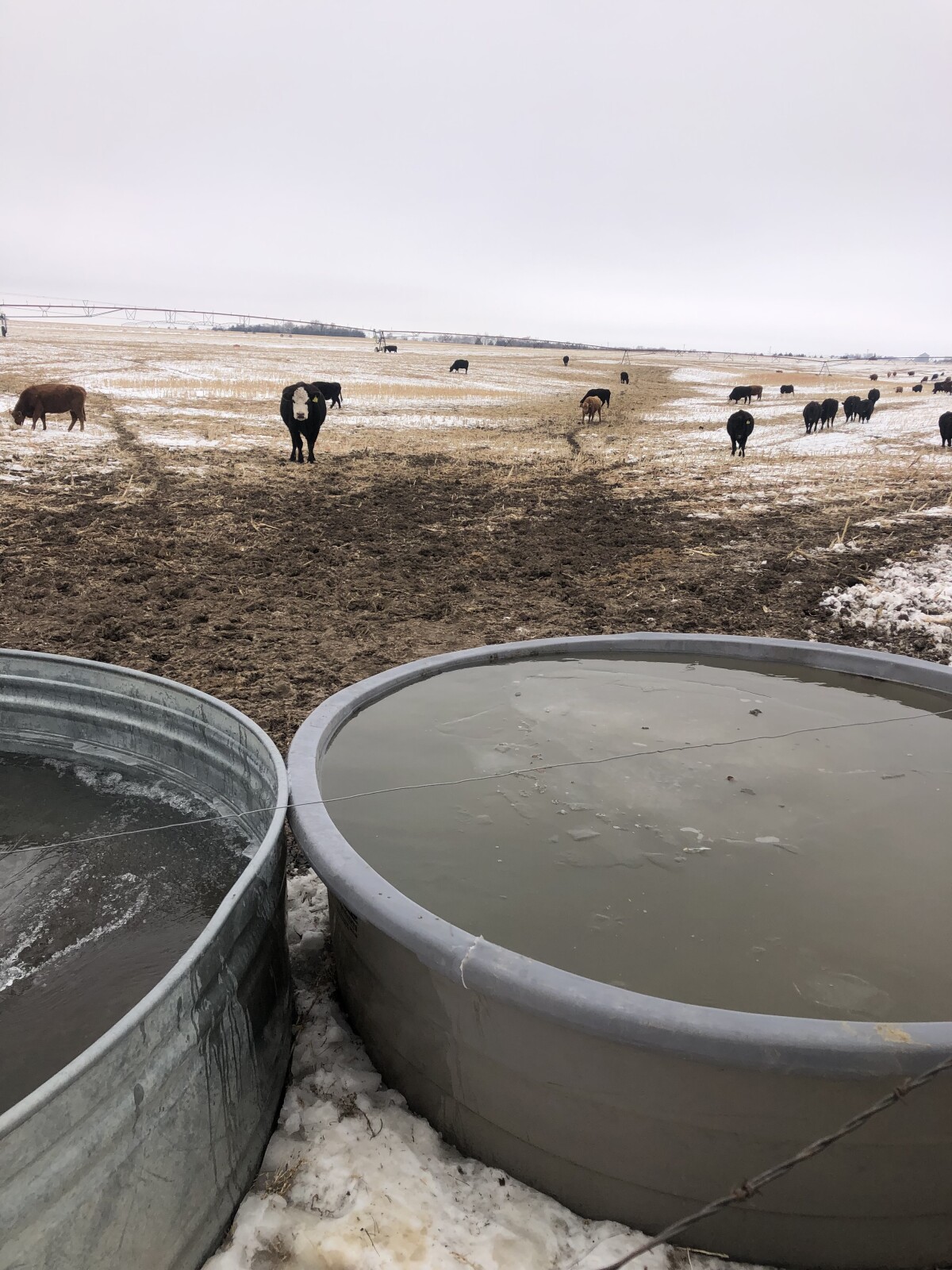
This post may contain affiliate links, which means that I may receive a commission if you make a purchase using these links, with NO additional cost to you.
Have you ever wanted to raise your own beef? It can be a rewarding experience. But before you dive into the world of cattle raising, it's important to know the basics of what's required and which breed of cattle is best for your needs. There are two distinctly different breed groupings of cattle—dairy (jersey, Holstein) and beef (angus, Herford)—so it’s important to understand the differences between them before making any decisions. In this blog, we will discuss why a beef cow is the best choice if you are wanting strictly beef and not milk, as well as what kind of resources you will need to successfully raise beef cattle on your homestead.
Why Choose a Beef Cow?
When selecting a breed of cattle for beef production, there are two main categories to consider - dairy and beef. While some dairy breeds can be used for beef production, if your goal is strictly to produce beef, you'll want to opt for a purebred beef breed. A family milk cow is called the Queen for a reason, and should be treated as such. Beef breeds will typically have larger frames than their dairy counterparts and can reach market weight faster with less feed. Furthermore, they can thrive in nearly any climate and environment, meaning that they can be raised in both cold and hot climates alike with minimal hassle.
Feed and Water
The next step is deciding how you'd like to finish the animal - either through grass or grain finishing. If grass finishing is your route of choice, you'll need direct access to plenty of pastureland (1 to 10 acres per steer depending on climate) or high quality hay (such as alfalfa). Grain finishing requires grain (typically corn), hay (for gut health). More on specific feeding strategies later. Regardless of which method you choose, keep in mind that while steers are usually used for beef production, heifers may also be suitable provided they don't reach maturity and become bred cows.
A clean water source will be needed as well. Typically, this is a stock tank. The tank needs to be big enough to hold 25-30 gallons of water per head per day, at the end of the finishing phase. It can also be 3 feet tall even for calves.
Raising beef cattle on your homestead can be an incredibly rewarding experience—not only does it provide delicious meat for your family, but it also gives you an opportunity to learn more about animal husbandry while connecting with nature at the same time. If this sounds like something that interests you, then make sure to research all the necessary requirements first before taking the plunge! With the right resources on hand and some dedication, there’s no reason why raising beef cattle couldn’t succeed on your homestead!
As I've grown in my journey as an entrepreneur, mom, gardener, and livestock owner, I struggled to find a planner that met my needs and kept me organized. So I MADE MY OWN. You can take a look at it on the link blow and buy it on amazon below
Don't want the whole calendar part? I got you! I pulled the gardening and animal care pages out and put them in a book all their own.
Wanting a community to lean into? Join the FREE Helping Your Family Homestead for Food group! This community is for the Mommas, looking to stay home and raise their kids, but unsure how to keep everyone fed and make ends meet. I share tips from my journey from the office, to half the income and feeding my family from home, while maintaining good nourishing food. Tips include: gardening, bulk buying, caning,/preserving, livestock, homesteading, and home remedies. Your family is precious and this group is to help you gain the knowledge and tools to keep your family well and not reliant on outside professionals. Remedies and tips are easy and simple for the busy momma, time is precious after all, including pregnancy, birth, young kids, and illness. Trust your Momma gut again! This community offers the resources + community you need to help get started on your journey and prepare for whatever future you envision.
Starting to garden doesn't have to be hard! I gathered all the tips I've learned over my gardening learning curve and made them into a simple course to jump start your gardening your life.
Supporting Your Family Naturally From the Inside Out community!! This community is for the Mommas, looking to Support Your Family from Nature for Wellness. Tips range from nutrition, herbals, detoxing, natural cleaning, and essential oils. Basically all the things I’ve learned slowly over the past 5+ years if my journey. We have moved off Facebook, so to better serve our community and be able to discuss openly option for providing for your family in the best way possible.
Join the FREE Community
Join the FREE Community
I've had 3 very different pregnancies. After the first traumatic birth, I learned better and how to care for my body naturally and prevent common pregnancy and birth problems before they arise. This quick course will get you the tools you need to have a naturally healthy pregnancy, labor, and delivery. My first pregnancy I had a normal western medicine all the things pregnancy. My second? I flipped to completely natural, no medicine. Bonus: Preventing Preeclampsia Without the Aspirin & Healing from Birth Trauma
Click here to get the stories straight to your email:
For more on wellness tips click here:
For more on homesteading on your budget click here:
For more simple DIY updates click here:
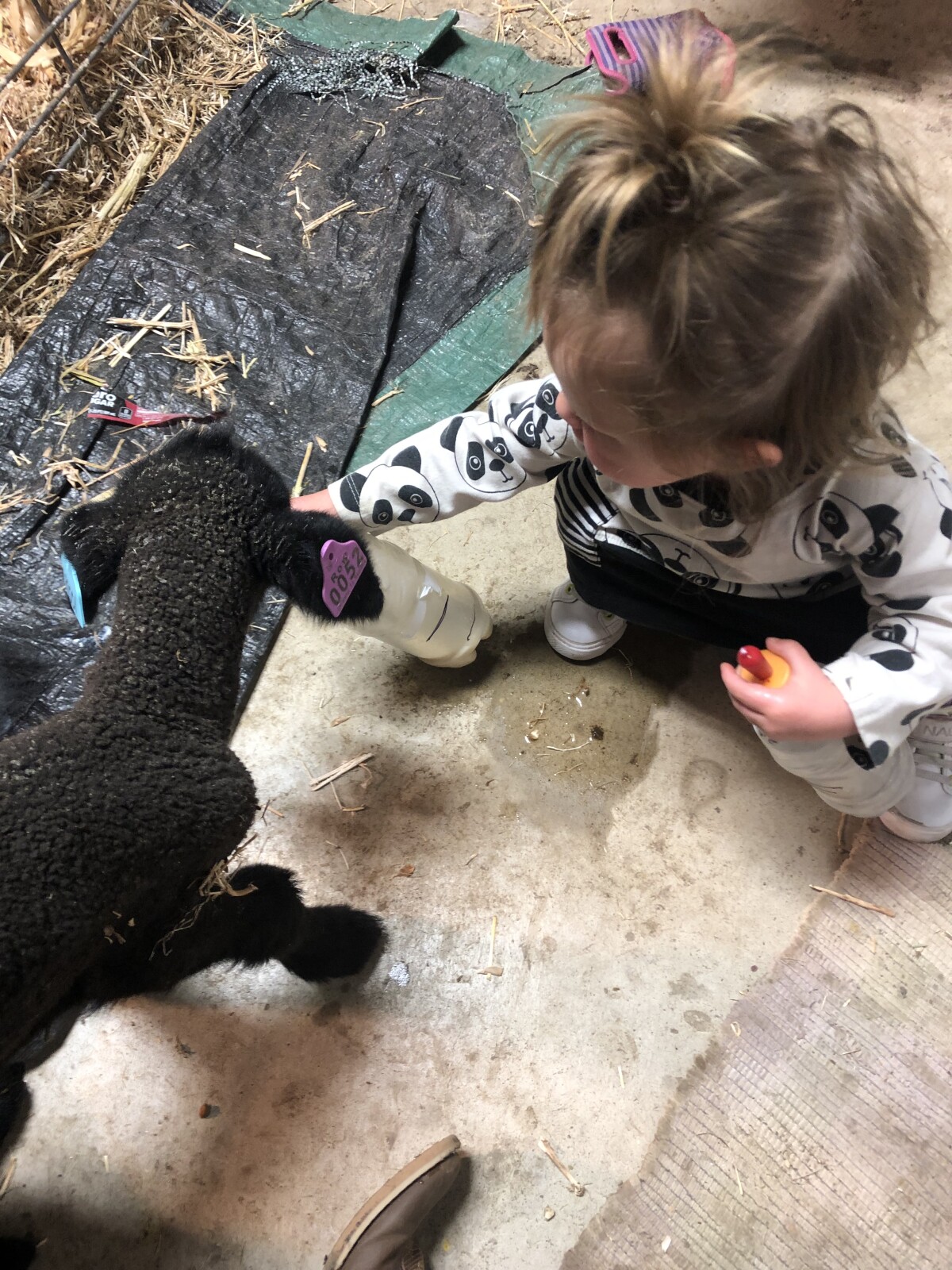
This post may contain affiliate links, which means that I may receive a commission if you make a purchase using these links, with NO additional cost to you.
When raising sheep, there is a good chance you'll at some point have an orphan lamb. There are many reasons a lamb may become orphan: the ewe (mom sheep) has too many lambs and not enough milk for everyone, the lamb was stepped on and now cannot keep up, sometimes the lamb is simply thrifty at birth and the mom rejects it. Caring for an orphan lamb can be challenging at first, but can be quite exciting. The first several days are the hardest. Newborns need to eat frequently. After the first 4 days, you can begin to increase the time between feedings and increase the amount of milk given. Begin to offer creep feed and hay around 2-3 weeks old. For starting the lambs off on the bottle read my blog on Starting Bottle Babies. A heat lamp is required if nights are anywhere near 40 degrees or lower.
The First Few Days
The first few days are crucial for any orphan lamb. Newborn lambs need to eat every 4 hours minimum, every 2 hours the first 12 hours with colostrum. Colostrum is a yellowish liquid that is secreted from the mother's mammary glands during late pregnancy and early lactation. It is rich in fat, protein, vitamins, minerals, and antibodies that help protect newborn lambs from disease. Lambs that do not receive colostrum are more susceptible to disease and death. Colostrum can be fed to orphan lambs via bottle or esophageal feeder tube.
If you do not have access to fresh colostrum, you can use powdered colostrum replacer mixed with warm water. You can also feed cow or goat colostrum if that is all you have available. Do not feed sheep milk replacer as it does not contain enough fat or calories for growing lambs. Feeding should take place every 2-4 hours for the first few days of life.
They need to be fed colostrum within the first 12 hours after birth. After 24 hours have passed, you can begin to feed them milk replacer. Milk replacer is a powder that you mix with water to create a milk-like substance for lambs to drink. Lambs should be fed milk replacer every 4 hours for the first week of life. After the first 3 days, you can stretch overnight to 6 hours.
If the lamb is strong and there are many of them, 4 or more, I start them onto a bucket with nipples for them. If they are weak, a single bottle, with a small nipple, is going to be necessary. Buckets with nipples, can help with the overnight feeds. Put their overnight feeds in the bucket and let them eat free choice overnight. This only works if cats cannot get to the bucket. They will chew the nipple off and drain the bucket of milk.
After the First Few Days
After the first 4 days, you can begin to increase the time between feedings and increase the amount of milk given per feeding. A general rule of thumb is 10% of body weight per day in milk replacer divided into 5-6 feedings per day. For example, a 10 lb lamb would need 1 pint of milk replacer per day divided into 5-6 feedings. This is usually 1-1.5 cups per feeding by the time they are 2 weeks old.
Around 2-3 weeks old, you can begin to offer creep feed and hay along with milk replacer and fresh water. Creep feed is a high-protein supplement fed to young lambs separate from their mothers' diet. It helps them grow and develop properly while providing essential nutrients they might not otherwise get from their mother's milk or pasture grazing alone. Hay should be offered free-choice starting at 3 weeks old. Hay is an important part of a sheep's diet and helps with digestion. Lambs should have access to hay at all times.
Lambs will continue to need milk replacer until they are weaned at 8-10 weeks old. At 5-6 weeks old, you can start to wean them off milk replacer and onto just creep feed and hay. As they eat more creep feed and hay, they will want less milk. Read the lambs consumption and slowly decrease the number of feedings. By 8-10 weeks old, they should be able to sustain themselves on just hay and pasture grasses.
Here’s a sample of how I feed bottle lambs:
Newborn: every 2 hours with colostrum for 12 hours
Day 2-3: every 4 hours round clock
Day 4-7: every 4 hours during day, 6 hours at night
Day 7-10: 5 times (6am, 10am, 2pm, 6pm, 10pm)
Day 11-14: 4 times (6am, 11 am, 4pm, 9pm)
Week 3-5: 3 times (6am, 1pm, 9pm)
Week 6-8: 2 times (6am, 6pm)
Week 9-10: 1 time (6am)
Week 11: None (hay and creep)
Some lambs require dropping feedings before they will even venture to try the creep feed and hay.
Caring for an orphan lamb may seem like a daunting task, but it can be very rewarding. It is important to remember that they require extra care and attention during those first few crucial days of life. By following these simple guidelines, you'll give your orphan lamb the best chance at a healthy start in life. Remember to always consult your veterinarian if you have any questions or concerns about your lamb's health. Good luck!
As I've grown in my journey as an entrepreneur, mom, gardener, and livestock owner, I struggled to find a planner that met my needs and kept me organized. So I MADE MY OWN. You can take a look at it on the link blow and buy it on amazon below
Don't want the whole calendar part? I got you! I pulled the gardening and animal care pages out and put them in a book all their own.
Wanting a community to lean into? Join the FREE Helping Your Family Homestead for Food group! This community is for the Mommas, looking to stay home and raise their kids, but unsure how to keep everyone fed and make ends meet. I share tips from my journey from the office, to half the income and feeding my family from home, while maintaining good nourishing food. Tips include: gardening, bulk buying, caning,/preserving, livestock, homesteading, and home remedies. Your family is precious and this group is to help you gain the knowledge and tools to keep your family well and not reliant on outside professionals. Remedies and tips are easy and simple for the busy momma, time is precious after all, including pregnancy, birth, young kids, and illness. Trust your Momma gut again! This community offers the resources + community you need to help get started on your journey and prepare for whatever future you envision.
Starting to garden doesn't have to be hard! I gathered all the tips I've learned over my gardening learning curve and made them into a simple course to jump start your gardening your life.
Supporting Your Family Naturally From the Inside Out community!! This community is for the Mommas, looking to Support Your Family from Nature for Wellness. Tips range from nutrition, herbals, detoxing, natural cleaning, and essential oils. Basically all the things I’ve learned slowly over the past 5+ years if my journey. We have moved off Facebook, so to better serve our community and be able to discuss openly option for providing for your family in the best way possible.
Join the FREE Community
Join the FREE Community
I've had 3 very different pregnancies. After the first traumatic birth, I learned better and how to care for my body naturally and prevent common pregnancy and birth problems before they arise. This quick course will get you the tools you need to have a naturally healthy pregnancy, labor, and delivery. My first pregnancy I had a normal western medicine all the things pregnancy. My second? I flipped to completely natural, no medicine. Bonus: Preventing Preeclampsia Without the Aspirin & Healing from Birth Trauma
Click here to get the stories straight to your email:
For more on wellness tips click here:
For more on homesteading on your budget click here:
For more simple DIY updates click here:
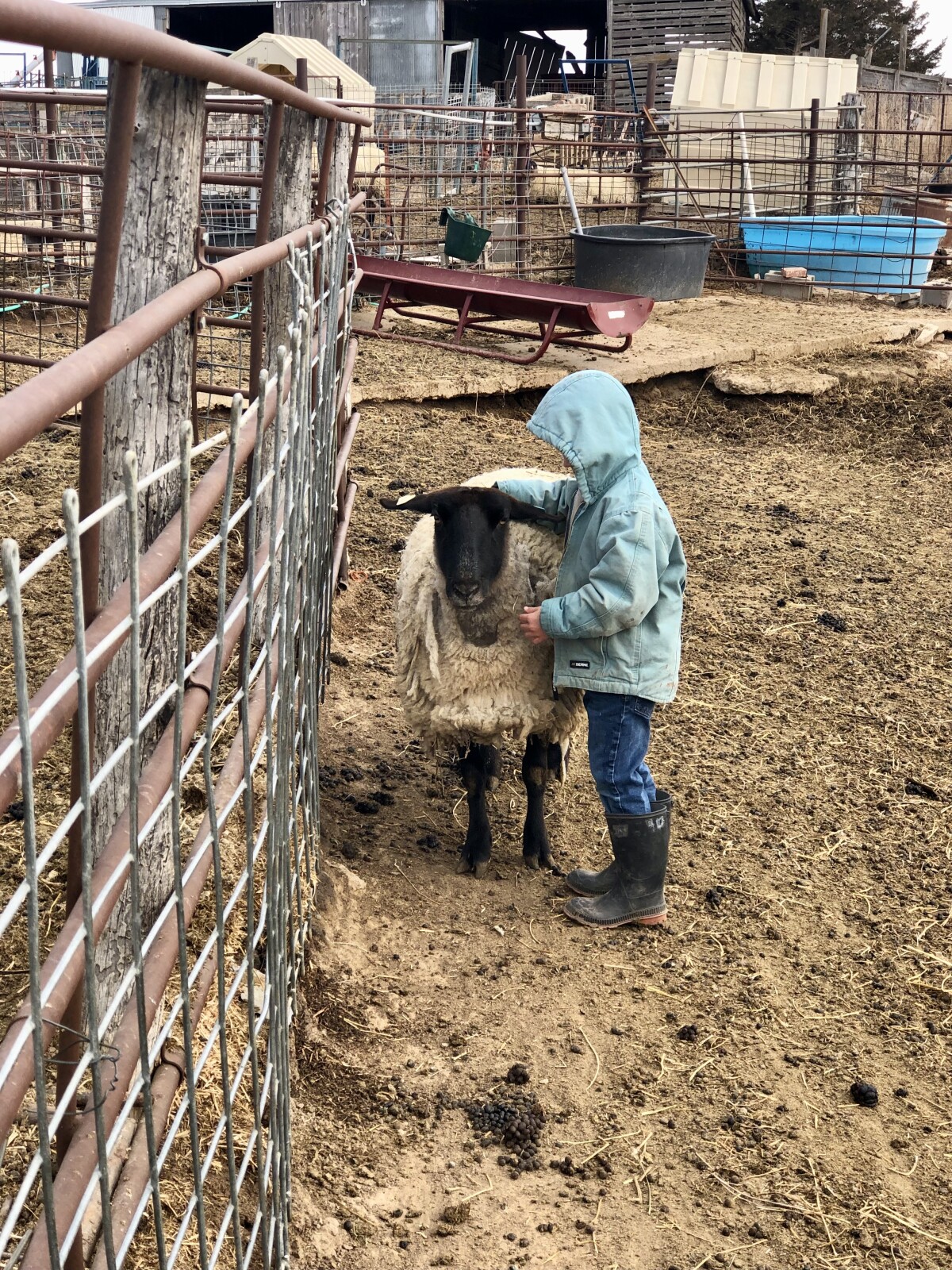
This post may contain affiliate links, which means that I may receive a commission if you make a purchase using these links, with NO additional cost to you.
Sheep are often seen as difficult and stubborn animals to take care of. But, in reality, they can be surprisingly simple to manage if you know the basics. The key is to pay close attention to health (more on that later). Whether you're looking for a small pen or want to let your sheep roam free on pasture land, there are certain necessities that will keep them happy, healthy and content. Read on to find out how to take care of your sheep like a pro!
Fencing for Your Sheep
The first thing you need is a sturdy fence for your sheep, whether it’s in a pasture or a small pen. Sheep have a knack for escaping any loose fence. If you’re using a confined pen, cattle panels are best because they provide a solid fence that is difficult for them to break, and usually can’t get their head stuck in, keeping them safe and secure. If you’re going with a pasture, woven wire works well but can be hard to tighten and maintain. You could also train your sheep to respect an electric fence - just make sure you have at least 5 strands running across the area, two or three of which should be hot. If your sheep escape, simply put them back in the pen and watch for about 10 minutes. They will usually go right back to where they got out and you can then fix it.
Food & Water Sources
Your sheep will need access to clean water - preferably from a tank no higher than 12 inches off the ground so they don’t have trouble reaching it. If they're out in pasture, grass will do fine; they’ll even prefer weeds over grass, so you can easily clean a weedy pasture up! If you keep them in a confined area, hay and grain should be provided at certain times during the year (more on that later).
Shelter and Protection
Sheep are very easy prey and need protection from predators. If your sheep are on pasture this could be a llama, donkey, livestock guardian dog, or a combination. Even in a confined fence, having a guard animal with them will help deter predators sneaking into the pens when you’re not around. When have a few pens that are difficult to seal up from the outside and are often targets for predators. We run a guard llama or donkey in those pens. I have a guardian dog for my bird flock, and will add another specifically for the sheep in the future. Additionally, make sure some form of shelter is available for lambing season so the mothers (and their offspring) can stay warm and dry when necessary.
As I've grown in my journey as an entrepreneur, mom, gardener, and livestock owner, I struggled to find a planner that met my needs and kept me organized. So I MADE MY OWN. You can take a look at it on the link blow and buy it on amazon below
Don't want the whole calendar part? I got you! I pulled the gardening and animal care pages out and put them in a book all their own.
Wanting a community to lean into? Join the FREE Helping Your Family Homestead for Food group! This community is for the Mommas, looking to stay home and raise their kids, but unsure how to keep everyone fed and make ends meet. I share tips from my journey from the office, to half the income and feeding my family from home, while maintaining good nourishing food. Tips include: gardening, bulk buying, caning,/preserving, livestock, homesteading, and home remedies. Your family is precious and this group is to help you gain the knowledge and tools to keep your family well and not reliant on outside professionals. Remedies and tips are easy and simple for the busy momma, time is precious after all, including pregnancy, birth, young kids, and illness. Trust your Momma gut again! This community offers the resources + community you need to help get started on your journey and prepare for whatever future you envision.
Starting to garden doesn't have to be hard! I gathered all the tips I've learned over my gardening learning curve and made them into a simple course to jump start your gardening your life.
Supporting Your Family Naturally From the Inside Out community!! This community is for the Mommas, looking to Support Your Family from Nature for Wellness. Tips range from nutrition, herbals, detoxing, natural cleaning, and essential oils. Basically all the things I’ve learned slowly over the past 5+ years if my journey. We have moved off Facebook, so to better serve our community and be able to discuss openly option for providing for your family in the best way possible.
Join the FREE Community
Join the FREE Community
I've had 3 very different pregnancies. After the first traumatic birth, I learned better and how to care for my body naturally and prevent common pregnancy and birth problems before they arise. This quick course will get you the tools you need to have a naturally healthy pregnancy, labor, and delivery. My first pregnancy I had a normal western medicine all the things pregnancy. My second? I flipped to completely natural, no medicine. Bonus: Preventing Preeclampsia Without the Aspirin & Healing from Birth Trauma
Click here to get the stories straight to your email:
For more on wellness tips click here:
For more on homesteading on your budget click here:
For more simple DIY updates click here:
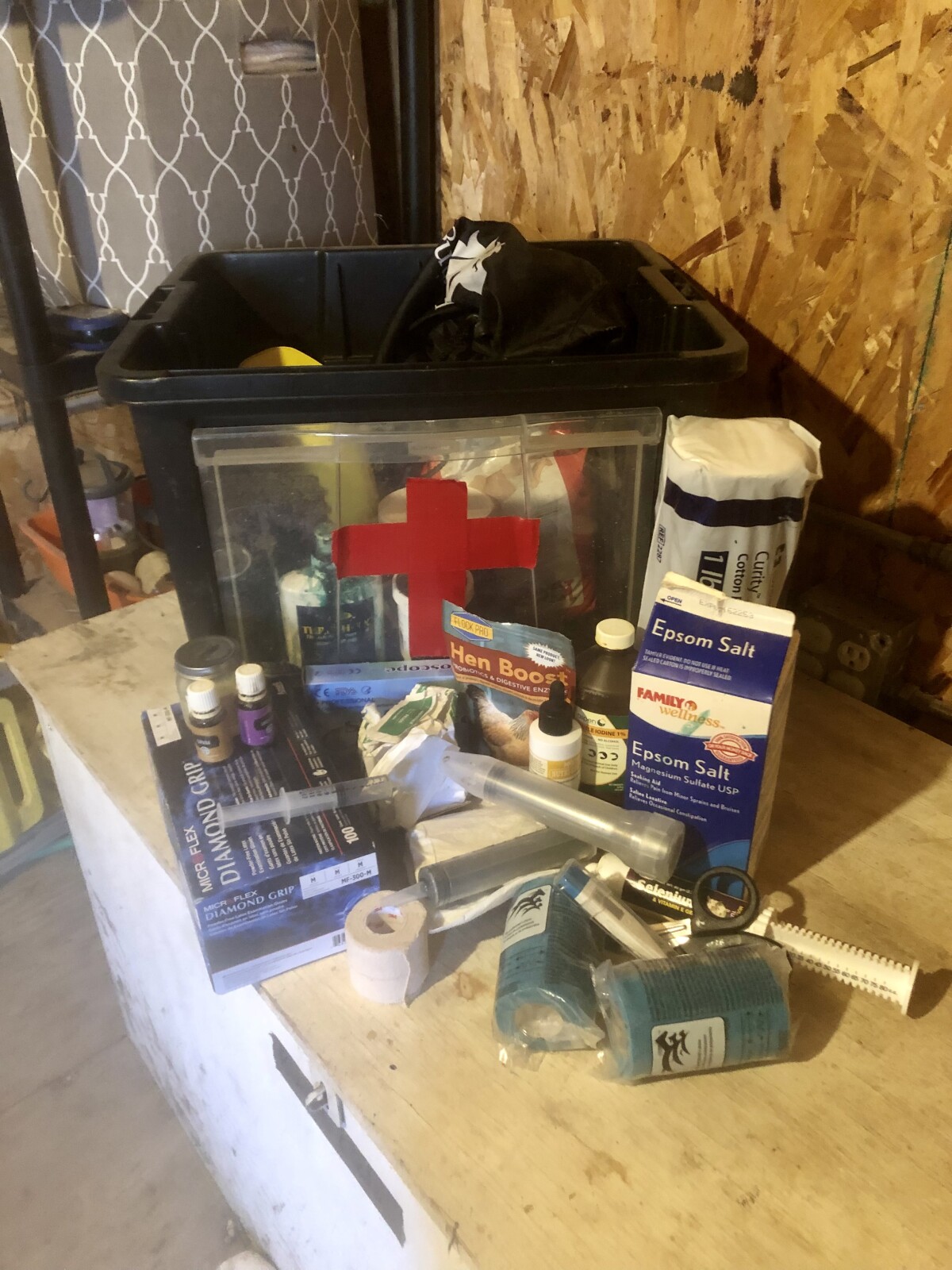
This post may contain affiliate links, which means that I may receive a commission if you make a purchase using these links, with NO additional cost to you.
Animals can bring so much joy and entertainment to our lives. From chickens and guineas, all the way up to horses and bottle lambs, it’s hard not to love having animals around. Even though they bring us joy, there are bound to be some minor injuries along the way. That’s why I always keep a first aid kit handy, just in case! In this blog post, I’ll share with you some of my must-have animal first aid supplies for all species, as well as some specific supplies for birds that live on my homestead.
The Basics For Every Species
No matter what type of animal you have, there are certain items that should be kept in your first aid kit at all times.
- Vet Wrap - Not only is vet wrap incredibly versatile—it can be used for bandaging sprains or holding an ice pack in place—but it also stays put even when wet or dirty. This makes it perfect for animals who spend a lot of time outdoors or get muddy often. Or even the perfect band aid for yourself.
- Gauze Pads - These are essential for cleaning out any wounds that your animals may get. They’re also great for absorbing blood and other fluids from deeper cuts or scrapes so that you can properly assess the damage and treat accordingly.
- Diapers - Believe it or not, diapers are very useful in animal first aid kits! They make an excellent padding material when bandaging large areas (like a horse's leg) because they have soft material on both sides and are thick enough that they won't tear easily. Plus, they're absorbent so they'll help keep the wound area dry during treatment. They are perfect for keeping a foot clean in the case of a foot abscess too. For how to treat that, click here.
- Duck Tape – Honestly this is in the vet kit and tool box. In the first aid kit, duck tape is the top layer in an abscess boot, or the final rings on a leg wrap.
- Calendula Salve - This salve is amazing for treating minor cuts and scrapes on any species of animal. It has anti-inflammatory properties which will help reduce swelling and discomfort while promoting healing and tissue regeneration at the same time. I have used this on scrapes and gashes from untrimmed rooster spurs. Read how to make it here.
- Epson Salt - Epson salt is essential if your animals ever has an abscess. Typically, you dissolve the salt in warm water to make a soak solution.
- Clean Bucket – Having a clean bucket nearby helps you transport water or cleaning solutions easily while keeping your hands free during treatment of your animal’s injury. It also comes in handy if you need to soak any gauze pads before using them on a wound—just fill up the bucket with water, add whatever disinfectant you prefer, then drop the gauze pads into the solution until ready to use!
- Cotton Batting – Cotton batting is great for wrapping around sprains since it provides cushioning without being too tight against the skin which could cause further discomfort for your pet (or livestock). Also works well as stuffing inside bandages if needed!
- Clean Rags – These come in handy when wiping away dirt from wounds before applying topical treatments like calendula salve or iodine solution (which we'll talk about later). They can also be used to clean off tools/supplies between uses so that everything stays sanitary throughout treatment processes.
- Syringes – Can be used to deliver needed antibiotics, but most often I’m using them for drenching, or washing out wound areas to small for a hose.
- Iodine – This is specifically for disinfecting tools or cleaning out abscesses.
- Lavender and Copieba Essential Oil – I use these two with calendula salve, to speed healing and decrease the pain on open wounds.
For The Birds
If you have chickens, geese, turkeys or guineas in your flock then there are two additional products that I would highly recommend having on hand: Nutri-Drink and Hydro-Boost. Nutri-Drink is an electrolyte supplement that helps poultry stay hydrated in hot weather while Hydro-Boost provides essential vitamins and minerals necessary for proper nutrition. Both products can be added to water and they taste great so birds will drink them willingly! Any time a bird is injured or stressed (like newly shipped chicks), I add some to the water for the first day and help out.
Having the right supplies on hand when caring for injured animals can make all the difference between a successful recovery and an unsuccessful one. With this list of must-haves in mind, you will be well prepared if an injury occurs with any of your animals—especially birds! Gather up these items now so that they’re ready when needed; doing so will give you peace of mind knowing that if the worst happens you’ll have everything necessary to provide the best possible care to your beloved pets. Good luck!
As I've grown in my journey as an entrepreneur, mom, gardener, and livestock owner, I struggled to find a planner that met my needs and kept me organized. So I MADE MY OWN. You can take a look at it on the link blow and buy it on amazon below
Don't want the whole calendar part? I got you! I pulled the gardening and animal care pages out and put them in a book all their own.
Wanting a community to lean into? Join the FREE Helping Your Family Homestead for Food group! This community is for the Mommas, looking to stay home and raise their kids, but unsure how to keep everyone fed and make ends meet. I share tips from my journey from the office, to half the income and feeding my family from home, while maintaining good nourishing food. Tips include: gardening, bulk buying, caning,/preserving, livestock, homesteading, and home remedies. Your family is precious and this group is to help you gain the knowledge and tools to keep your family well and not reliant on outside professionals. Remedies and tips are easy and simple for the busy momma, time is precious after all, including pregnancy, birth, young kids, and illness. Trust your Momma gut again! This community offers the resources + community you need to help get started on your journey and prepare for whatever future you envision.
Starting to garden doesn't have to be hard! I gathered all the tips I've learned over my gardening learning curve and made them into a simple course to jump start your gardening your life.
Supporting Your Family Naturally From the Inside Out community!! This community is for the Mommas, looking to Support Your Family from Nature for Wellness. Tips range from nutrition, herbals, detoxing, natural cleaning, and essential oils. Basically all the things I’ve learned slowly over the past 5+ years if my journey. We have moved off Facebook, so to better serve our community and be able to discuss openly option for providing for your family in the best way possible.
Join the FREE Community
Join the FREE Community
I've had 3 very different pregnancies. After the first traumatic birth, I learned better and how to care for my body naturally and prevent common pregnancy and birth problems before they arise. This quick course will get you the tools you need to have a naturally healthy pregnancy, labor, and delivery. My first pregnancy I had a normal western medicine all the things pregnancy. My second? I flipped to completely natural, no medicine. Bonus: Preventing Preeclampsia Without the Aspirin & Healing from Birth Trauma
Click here to get the stories straight to your email:
For more on wellness tips click here:
For more on homesteading on your budget click here:

